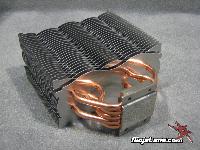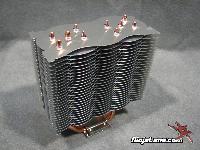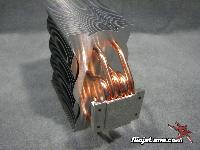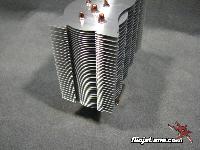After careful consideration I have decided to transfer all hardware review activities to a new domain. I purchased Hardwareasylum.com in 2012 and have been working hard to build a new and improved Ninjalane on that domain. If you are reading this you have reached one of the archived articles, news, projects and/or reviews that were left behind during the site migration.
Please update your bookmarks and be sure to visit the new and improved Ninjalane at Hardwareasylum.com
ThermoLab Baram Heatsink Review
Author: Dennis Garcia
Published: Sunday, February 08, 2009
Introduction
Aircooling is the easiest and most economical way to cool your system and while any stock or OEM heatsink will do a pretty good job you have to wonder if the OEM solution is really keeping things as cool as they should be. That’s not to say every processor needs to be at subzero temperature but higher temps tend to shorten the usable lifespan of any electronic device and any overclocker will tell you that cooler temps provide better stability and faster speeds.
In this review we will be looking at a new heatsink from ThermoLab called the Baram. Baram is a tower style heatink that comes with 10 copper heatpipes and a very ornate aluminum fin radiator.
In this review we will be looking at a new heatsink from ThermoLab called the Baram. Baram is a tower style heatink that comes with 10 copper heatpipes and a very ornate aluminum fin radiator.
10 heatpipes is somewhat of a marketing term considering there are only 5 physical heatpipes. The 10 comes from them being broken up into 2 distinct towers and thus give you twice the cooling capacity. For those that do not know heatpipe coolers work by moving the thermal energy in a series of copper tubes. To get this heat moving you need a hot side and a cold side and the greater the temperature difference the faster the transfer can occur. So by cooling both ends of a heatpipe you get twice the surface area in half the space.
Heatpipe arraignment is very important to ensure proper cooling. ThermoLab has staggered the 10 heatpipes so that moving air will contact each of the pipes while it is passing thru the heatsink. Compare this with some of the more common tower coolers that place them all in a single line and you can see why they don’t cool very well.
It is also important to note where each of the heatpipes is in relation to where it contacts the heat source. For CPU coolers this means looking at the center most heatpipe. In traditional tower coolers this pipe is usually located in the middle of the radiator blocked by the outer pipes. ThermoLab has placed this pipe in the middle of the cooler with unobstructed access to moving air. Combine that with the unique radiator fin design that helps to trap moving air and increase its velocity and you have a rather efficient cooling solution.
For some detailed illustrations of how these design ideas work be sure to check out the ThermoLab website.
It is also important to note where each of the heatpipes is in relation to where it contacts the heat source. For CPU coolers this means looking at the center most heatpipe. In traditional tower coolers this pipe is usually located in the middle of the radiator blocked by the outer pipes. ThermoLab has placed this pipe in the middle of the cooler with unobstructed access to moving air. Combine that with the unique radiator fin design that helps to trap moving air and increase its velocity and you have a rather efficient cooling solution.
For some detailed illustrations of how these design ideas work be sure to check out the ThermoLab website.





